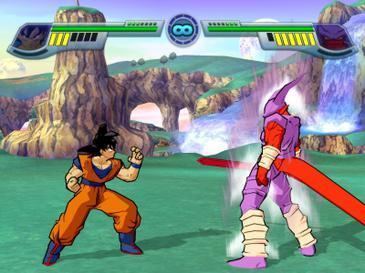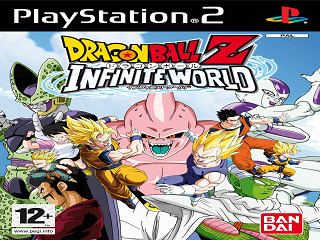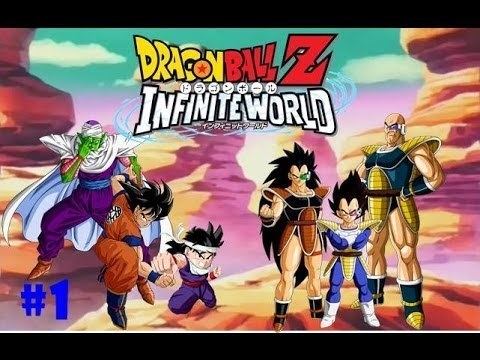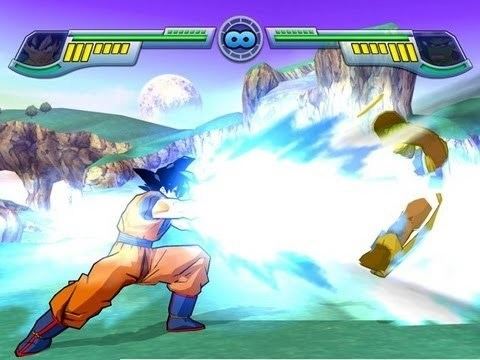7.8 /10 1 Votes
4.4/5 Emuparadise Distributor(s) Atari Europe (EU) | 4.8/5 CoolROM 48% Metacritic Initial release date 4 November 2008 | |||||||||||||||||||||||||||||||||
 | ||||||||||||||||||||||||||||||||||
Release date(s) NA: November 4, 2008 (2008-11-04)JP: December 4, 2008 (2008-12-04)EU: December 5, 2008 (2008-12-05) Publishers Bandai, Bandai Namco Entertainment, Atari Similar Dragon Ball Z: Budokai games, Bandai games, Fighting games | ||||||||||||||||||||||||||||||||||
Dragon ball z infinite world ps2 gameplay
Dragon Ball Z: Infinite World (ドラゴンボールZ インフィニットワールド, Doragon Bōru Zetto Infinitto Wārudo) is a fighting video game for the PlayStation 2 based on the anime and manga series Dragon Ball and fourth installment in the Budokai series. The game was developed by Dimps and published in North America by Atari and in Europe and Japan by Namco Bandai under the Bandai label. It was released in North America on November 4, 2008, in Japan on December 4, and in Europe the following day. It is the last Dragon Ball Z game to be released on the PlayStation 2 console and to be published by Atari.
Contents

The game is a fighting game, the player pits their character against other characters controlled by the in game AI or by another player, which depends on the mode that the player or players are in. The Dragon Mission game mode features other gameplay elements, making the gameplay less linear. Within a week of the game's initial release in Japan, it sold 76,452 units. The game received generally negative reviews, with some of video games publications commenting on the similarities between other games from Dragon Ball Z.

Gameplay

The game's mechanics are essentially the same as the Budokai games, with some elements carried over from Burst Limit. Players take control of and battle various characters from the Dragon Ball franchise. 42 characters are playable, in comparison with Budokai 3, which had thirty-eight characters in its roster.

The story mode, called Dragon Mission, is displayed as a map with various objective missions icons that retell some of the battles within Dragon Ball Z and Dragon Ball GT. Players take control of their icon, a Goku avatar, by walking or running to an available mission icon. These missions range from standard and timed endurance battles. Other missions include mini games such as on-foot searches, races to reach a destination or find an item, timed button sequence responders and first person shooters.

Skill capsules are carried over from the Budokai games. They allow players to customize characters with a variety of special techniques and attributes. The capsules can be bought with Zeni, and the more of the same capsule a player buys, the stronger their effects become. This differs from the Budokai games, where skills had to be placed multiple times on a character for them to become stronger.

A mode called "Fighter's Road" becomes available after certain goals are met. Players participate in a series of battles on four of the maps from the Dragon Mission mode. Like Dragon Mission, players are rewarded a certain amount of Zeni after every victory. They are also rewarded more Zeni according to how many battles they've won when they exit.
Development
The game was first announced in August 2008 by Atari's French website. The announcement stated that the game was in development by Dimps and would retain many of the qualities found in the Budokai series, yet they would include new innovations such as the Dragon Mission mode and a simplified combat system from Burst Limit. It was also promised that the game's roster would include up to forty playable characters, not including transformations and was given a European release date of sometime in December of that year. Included with the announcement were several screenshots which revealed gameplay of the combat system and four of the mini-games from both the Saiyan and Android sagas. This was followed by an announcement posted on Atari's North American page revealing that they would retain the Infinite World title and a release date sometime in November. Around the same time, V Jump announced the game would be released in Japan and that the game would also utilize the Infinite World title. In September, more information was released stating that the capsule system would be brought back and the audio would include the both English and Japanese voice talent. In October, Famitsu posted more screenshots revealing more mini-games within the Frieza and Cell sagas. On October 15, Atari released a press statement announcing that the game was completed. A few days later the game was unveiled at the Tokyo Game Show.
According to producer Riyo Mito, the game's title Infinite World implies the immense gameplay of the epic Dragon Ball universe within the scope of the game's Dragon Mission mode. The game was specifically chosen for the PlayStation 2 to target fans that did not have access to the PlayStation 3 and Xbox 360 consoles to play the previous title, Burst Limit, at the time.
Music
Composer Kenji Yamamoto returns to provide music for the game along with Kanon Yamamoto, with both credited as Kenz and Canon respectively. There are twenty-two pieces created exclusively for the game, with the rest carried over from the previous three Budokai games. The game's theme songs "Hikari no Sasu Mirai e!" and "Dragon Ball Party" were written by Yuriko Mori and performed by Hironobu Kageyama. However, the game's North American packaging only features Kageyama as a contributor, and the game's instruction manual does not list any music credits, causing people in the gaming community, not familiar with the material, to believe that Kageyama was the game's composer. Some game critics have gone on to record in their reviews citing the music as the superior part of the game. The new music was released as Dragon Ball Z: Infinite World Original Soundtrack by Lantis on January 7, 2009, while the theme songs were released as a single by King Records on Christmas Day 2008.
Reception
Following the game's release, Infinite World went on to become the second top-selling game in Japan, selling 76,452 units the first week in the country right behind Professor Layton and the Unwound Future. It was reported that the game, along with Backyard Baseball and Alone in the Dark, helped Atari out of their financial slump with a net 44.5 percent increase.
Despite its sales, the game received mixed reviews and earned aggregated scores of 48/100 on Metacritic and 50.80% on GameRankings. Greg Miller of IGN called the gameplay repetitive and concluded his review stating "Do not play Dragon Ball Z: Infinite World." McKinley Noble of GamePro called the Dragon Mission mode too daunting and compared the game's time rings to those of Superman 64. Yet it was still called a satisfying game for true "hardcore" fans of the show. Dakota Grabowski of GameZone stated that the game "couldn’t be anymore insipid even if it tried". Robert Workman of GameDaily called the quests lame, the mini-games ridiculously bad, and the game itself boring. He went on to suggest that players looking for a Dragon Ball Z game buy an earlier title.
